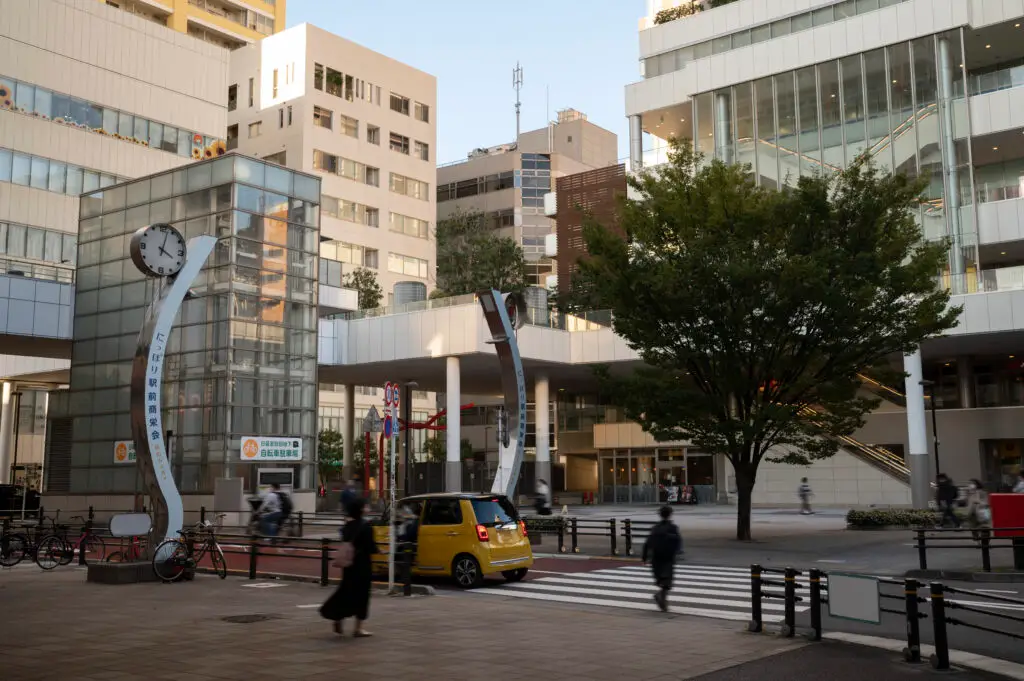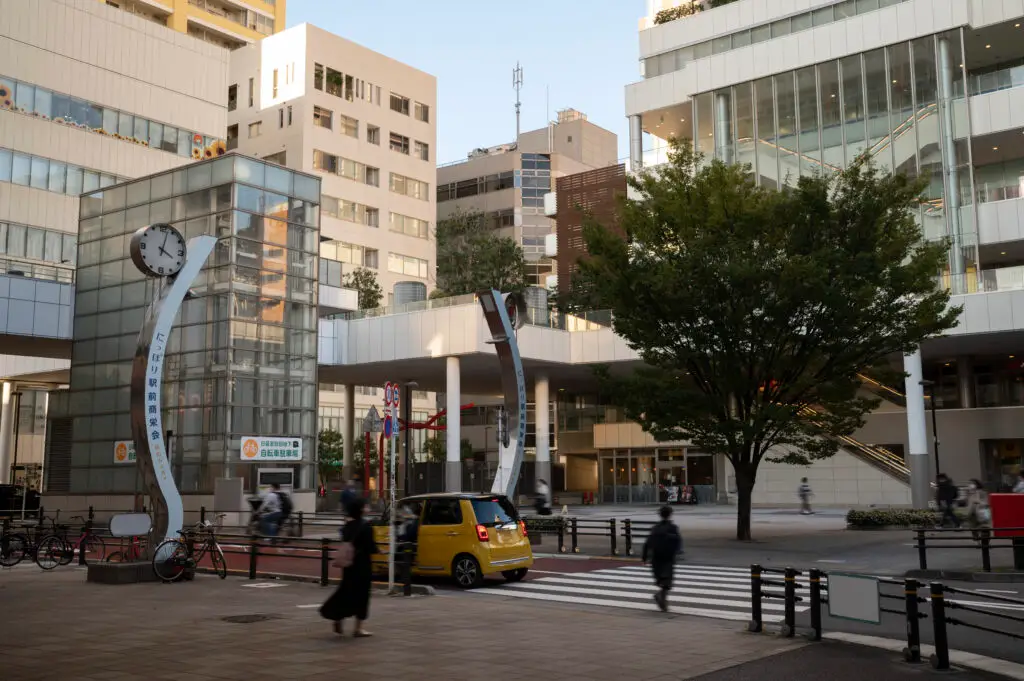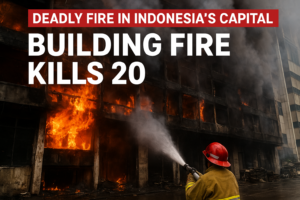
Meta Description:
A powerful explosion at a munitions factory in Russia’s Chelyabinsk region has left at least ten people dead and several others injured. Authorities have ruled out a drone attack as investigators probe the cause of the blast at a plant believed to produce ammunition for the Russian military.

Tragedy in the Urals: Blast Rocks Industrial Region
At least ten people have died and nineteen more have been injured following a devastating explosion at a munitions plant in the Urals, Russian officials have confirmed. The blast occurred late on Wednesday in the Kopeisk district of the Chelyabinsk region, an area known for its heavy industry and proximity to the Kazakhstan border.
Governor Alexei Teksler announced the casualties early Thursday, describing the incident as one of the most serious industrial accidents in the region in recent years. Local authorities have declared Friday a day of mourning, as rescue teams continue to search for a dozen workers who remain unaccounted for.
Eyewitnesses Describe Fireball and Shockwaves
Verified footage circulating on social media and analysed by BBC Verify shows a massive fireball erupting into the night sky, lighting up nearby roads. One video, captured by CCTV around 3km from the site, recorded the exact moment of the explosion, while another—filmed by a passing motorist—shows flames engulfing part of the factory complex.
Residents in nearby communities reported hearing a deafening bang followed by tremors that rattled windows and set off car alarms. “It was like an earthquake,” one Kopeisk resident told a local outlet. “We could see an orange glow and thick smoke rising from the direction of the Plastmass plant.”
Recent global scientific developments also highlight how sensitive industrial processes can be. For instance, researchers working on regenerative medicine recently made progress in growing human teeth in the lab, a breakthrough reported here:
👉 https://ccnbnews.com/scientists-are-racing-to-grow-human-teeth-in-the-lab-a-breakthrough-in-regenerative-dentistry/
Similarly, studies of historical disasters—such as the asteroid impact in China 10,000 years ago—help experts understand the behaviour of explosive forces:
👉 https://ccnbnews.com/asteroid-impact-in-china-10000-years-ago-released-energy-equal-to-40-atomic-bombs/
For more science-related updates:
👉 https://ccnbnews.com/category/science/
Official Response and Immediate Actions
Governor Teksler confirmed that firefighting teams and emergency services were deployed immediately after reports of the explosion. The fire, which raged for several hours, was fully extinguished by early Thursday morning.
In a public statement, Teksler stressed that the incident “was not the result of a drone attack,” a clarification that came amid recent reports of drone strikes on Russian infrastructure. Instead, the focus of the ongoing investigation has shifted toward technical malfunction or safety lapses inside the facility.
“Emergency teams are still searching for twelve missing employees,” Teksler said. “Our priority remains the rescue and safety of all personnel, as well as supporting the families affected by this tragedy.”
Unconfirmed Reports on the Factory’s Purpose
Authorities have not officially named the facility involved in the explosion. However, verified video evidence and local media point to the Plastmass Plant, a site historically associated with the production of ammunition, explosives, and other military-grade materials.
Local journalists have reported that the plant supplies components for the Russian armed forces, though this information has not been confirmed by the Defence Ministry. Industrial safety experts say that such plants typically handle highly volatile chemicals, making them vulnerable to catastrophic accidents if proper safety protocols are not followed.
In other global developments, the UN’s top court recently issued a major ruling on humanitarian access in Gaza, raising questions about international oversight in conflict zones:
👉 https://ccnbnews.com/uns-top-court-rules-that-israel-must-allow-humanitarian-aid-into-gaza/
Analysts are also discussing geopolitical strategies connected to the region, including a detailed analysis of policy proposals for Gaza:
More world updates here:
👉 https://ccnbnews.com/category/world/
Rescue Efforts Continue Amid Harsh Conditions
Search and rescue teams worked through the night despite cold temperatures and limited visibility. According to the Chelyabinsk Emergency Services Department, more than 150 firefighters and 30 specialised units were mobilised to contain the blaze and clear debris.
Drone footage from the scene showed collapsed structures and charred remains of factory buildings. Emergency personnel could be seen cutting through steel beams and sifting through rubble in hopes of finding survivors. Medical helicopters transported the severely injured to regional hospitals, where several remain in critical condition.
Day of Mourning Declared Across the Region
The Chelyabinsk regional government has announced Friday as an official day of mourning. Flags will be flown at half-mast, and entertainment events have been cancelled. Local churches and community centres are organising memorial services for the victims.
Governor Teksler said, “We share this grief together. This tragedy has shaken our region, and we will do everything possible to support the affected families.”
Historical Context: Industrial Accidents in Russia’s Defence Sector
Russia’s defence industry has a long history of accidents linked to ammunition and explosive manufacturing plants. Over the past decade, several incidents have drawn attention to aging infrastructure and outdated safety systems across industrial facilities.
In 2021, an explosion at a gunpowder factory in the Ryazan region killed sixteen workers. Similarly, in 2019, a series of blasts at an ammunition depot in Siberia forced the evacuation of thousands of residents. Investigators in many of these cases cited negligence, violations of fire-safety regulations, and poor maintenance as primary causes.
Experts say the latest explosion highlights ongoing risks in facilities that were built decades ago and have undergone limited modernisation.
Environmental incidents like this explosion often bring renewed attention to global pollution risks. A recent story regarding unsafe industrial practices and chemical exposure in Europe highlights similar challenges:
👉 https://ccnbnews.com/pakistan-crash-out-of-afc-futsal-asian-cup-qualifiers-after-crushing-13-0-defeat-to-saudi-arabia/
Possible Causes Under Investigation
While officials have ruled out any external attack, investigators from Russia’s Investigative Committee have opened a criminal inquiry into the explosion. Early speculation suggests the blast may have been triggered by a chemical reaction during the production process or improper storage of explosives.
Industrial safety consultant Andrei Polyakov, speaking to the state-run news outlet TASS, noted that “many factories in the region operate continuously with high heat and pressure processes. Even a small spark or static discharge can cause a devastating explosion if safety standards are not strictly enforced.”
Authorities are also examining whether human error or mechanical failure may have contributed to the disaster.
Local Community in Shock
The town of Kopeisk, home to around 130,000 people, has been left in shock. Many residents have relatives or friends who work in the industrial sector. “We still don’t know who is missing,” one local teacher said. “People are afraid to go to work at other plants now. Everyone is talking about safety.”
Shops and schools remained open, but a sombre mood spread throughout the town. Local businesses have begun collecting donations for affected families, while volunteers from nearby cities have travelled to assist rescue workers.
Meanwhile, health authorities in other parts of the world are updating medical guidelines. The CDC’s revised immunization schedule has introduced new recommendations for children and adults:
👉 https://ccnbnews.com/cdc-updates-immunization-schedule-individualized-covid-19-decisions-and-standalone-chickenpox-shot-for-toddlers/
Another major public health update is the approval of a new HIV protection jab in the UK:
👉 https://ccnbnews.com/game-changing-hiv-protection-jab-approved-in-england-and-wales/
Reactions Across Russia and Beyond
The explosion has prompted condolences from across Russia. Senior officials from Moscow’s Ministry of Emergency Situations travelled to Chelyabinsk to oversee the response. State television coverage framed the incident as a “tragic accident”, focusing on the heroism of firefighters and rescue personnel.
However, some independent media outlets and social commentators have raised questions about workplace safety oversight in state-linked factories. Calls have grown for increased transparency and stricter inspection regimes in the defence industry.
Internationally, the incident has drawn muted reactions, though several regional observers noted that the explosion underscores the risks of industrial militarisation in Russia’s interior.
The Urals: A Strategic Industrial Hub
The Ural Mountains have long served as Russia’s industrial backbone. Stretching from the Arctic to Kazakhstan, the region houses vast mineral reserves and hundreds of factories producing metals, machinery, and armaments. During the Soviet era, the Urals became a centre for weapons manufacturing, with many plants still operating today under state contracts.
The Chelyabinsk region, in particular, has been instrumental in supplying materials for Russia’s defence and nuclear sectors. It has also been the site of previous accidents, including chemical leaks, reactor mishaps, and explosive incidents.
Experts warn that the combination of aging Soviet-era facilities and increased wartime production demands poses ongoing safety challenges.
Environmental and Health Concerns
Environmental groups have expressed concern over the possible release of toxic chemicals following the explosion. Although regional authorities insist that air quality remains within safe limits, locals have reported a lingering chemical odour.
Environmental scientist Dr. Elena Mikhailova from the Chelyabinsk Environmental Monitoring Centre said that such incidents can release “fine particulate matter, heavy metals, and nitrogen compounds that are harmful when inhaled.”
Monitoring stations are continuing to test the air and nearby water sources to determine whether contamination occurred.
Russia’s Broader Industrial Safety Record
Industrial safety has been a persistent challenge across Russia. According to government data, hundreds of workplace accidents occur each year, particularly in sectors such as mining, metallurgy, and defence manufacturing.
Although Russia has safety regulations comparable to European standards, enforcement is often inconsistent. Factors such as underfunded inspections, outdated equipment, and managerial negligence have contributed to repeated tragedies.
In the wake of this latest explosion, analysts predict renewed debate about how to modernise critical infrastructure without disrupting production in strategically important sectors.
Elsewhere, human-interest stories are drawing attention—from award-winning micro-photography to unexpected breakthroughs in wildlife science:
For more stories and features:
👉 https://ccnbnews.com/category/stories/
Support for Victims and Their Families
The Chelyabinsk regional administration has pledged financial compensation and psychological support for victims’ families. A crisis centre has been established to assist relatives searching for missing persons.
Hospitals in the region have appealed for blood donations, and emergency hotlines have been set up to provide information. “We are doing everything we can,” said regional health minister Irina Gorbunova, “but the scale of the injuries is severe.”
International Context and Speculation
Given the ongoing conflict involving Russia, speculation quickly emerged online suggesting the explosion might be linked to external interference or sabotage. However, Governor Teksler’s immediate clarification that “this was not a drone attack” appears aimed at quelling such rumours.
Military analysts note that Russia’s interior factories are typically located far from active combat zones, making drone attacks less likely. Still, the coincidence of recent infrastructure incidents across Russia has fuelled discussions about vulnerabilities within its industrial network..
What Happens Next: The Investigation Process
The Investigative Committee—Russia’s equivalent of a federal law enforcement agency—has begun collecting forensic evidence from the site. This includes chemical residue samples, structural debris, and surveillance footage.
Experts will examine whether the explosion was due to non-compliance with safety standards, equipment malfunction, or improper storage of explosive materials. A preliminary report is expected within the next few weeks, though full investigations in such cases often take months.
Community Resilience and National Reflection
As the Chelyabinsk region begins its mourning period, communities are reflecting on the broader lessons of the tragedy. Local media outlets have published editorials urging greater investment in worker safety and modernisation of outdated facilities.
“Every accident like this is a warning,” wrote one columnist in the Chelyabinsk Industrial Gazette. “We cannot afford to lose more lives due to neglect or outdated technology.”
Across Russia, the explosion has reignited discussions about balancing industrial productivity with the safety of those who sustain it.
Conclusion: A Nation Confronts Its Industrial Risks
The explosion at the Kopeisk munitions plant is more than an isolated accident—it is a stark reminder of the inherent dangers within Russia’s defence manufacturing network. As investigators search for answers and families mourn their loved ones, questions remain about whether this tragedy could have been prevented.
In a country where industrial production is both a source of national pride and risk, the call for reform grows louder. For the people of Chelyabinsk, however, the priority remains simple: to grieve, rebuild, and ensure such a tragedy never happens again.
International sports headlines also continue to develop rapidly. Pakistan suffered a major setback in the AFC Futsal Asian Cup qualifiers:
👉 https://ccnbnews.com/pakistan-crash-out-of-afc-futsal-asian-cup-qualifiers-after-crushing-13-0-defeat-to-saudi-arabia/
Meanwhile, cricket authorities in India are pushing for stricter laws by moving to criminalise match-fixing:
👉 https://ccnbnews.com/bcci-moves-to-criminalise-match-fixing-in-india-to-safeguard-crickets-integrity/
Full sports coverage here:
👉 https://ccnbnews.com/category/sports/


